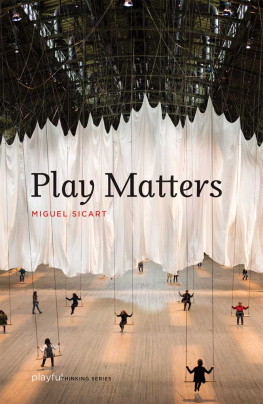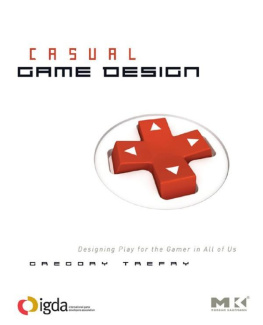
The Arts of LARP
Design, Literacy, Learning and Community in Live-Action Role Play
David Simkins

McFarland & Company, Inc., Publishers
Jefferson, North Carolina
LIBRARY OF CONGRESS CATALOGUING DATA ARE AVAILABLE
BRITISH LIBRARY CATALOGUING DATA ARE AVAILABLE
e-ISBN: 978-1-4766-1730-5
2015 David Simkins. All rights reserved
No part of this book may be reproduced or transmitted in any form or by any means, electronic or mechanical, including photocopying or recording, or by any information storage and retrieval system, without permission in writing from the publisher.
Cover photograph by Josh Baker Thinkstock
McFarland & Company, Inc., Publishers
Box 611, Jefferson, North Carolina 28640
www.mcfarlandpub.com
Acknowledgments
This book would not be possible without the partnership of Margaret Simkins, loving wife and LARP guru. While the specific words, theories, and creations of this work are, for better or worse, mine alone, my understanding of LARP has been developed by and in many cases originated through conversation and creation with Margaret.
I also want to give my wholehearted thanks to the greater Intercon community, the Gateway community, CU Anywhere, the Chicago, Madison, Boston, DC, and UK LARP communities, and all of the individuals who participated in this research, and who created a host of games, characters, worlds, and interactions beyond counting. Together they have constructed an amazing menagerie of creative experiences and close personal friendships through which I have learned better to live, to love, and to find well being.
Additionally, thanks to Kristen Satterlee for her tremendous help editing this text, and to Brian Williams, who allowed me to dissect his games, both as written and as performed, and did not balk as I present his wonderful work to the world in this vivisected form.
Preface
This work is the product of a six-year ethnographic study of a live-action role play (LARP) community organized around the Intercon theater-style LARP convention. The work explores LARP as a practice formed by this community. Though the practice continues to evolve over time, the work shows some of the common structures of good LARP practice, as identified within the Intercon LARP community.
The analyses within this ethnographic work shows commonalities between LARP and other forms of role play, including the history of social simulations used in formal and informal learning environments, theater, reenactment communities, and various other kinds of role playing games.
In addition to description and historical context, the book explores some of the structures evident in this communitys LARP practice that set it apart as a significant form of partici-pant production and collaborative storytelling. The work also explores some of the constraints and affordances of designing, and co-designing, within this highly collaborative environment in ways that facilitate engagement with a variety of LARP participants.
This exploration identifies the structure of LARP, in the abstract, as a combination of character, world and theme, each of which are composed of story, environment, rules, and play. In this structure, play has an operational role in instantiating the other elements within LARP, turning written material, costuming, set design, and other forms of preparatory activity into reality through performance.
Finally, this book explores the potential for the use of live-action role play as a tool for other interests, including the development of empathy, critical ethical reasoning and various forms of content learning and technical competencies. In the end, the work is a testament to the effort and achievement of this extended LARP community, who show time and care through their construction of meaningful experiences, using LARP as their chosen medium.
Introduction: On Studying LARP
If there is a feeling better than sharing something you love with others, I havent found it. What you have in your hands is a work on play. We live in a world of serious things. Our news is serious. Our politics are serious. Our work interactions are serious. Even our games are sometimes serious. Somewhere along the course of history, western society came to identify seriousness as oppositional, sometimes even antithetical, to play. Play became associated with the trivial and the facile. How, then, did play become so complicated?
The story of play as trivial and facile does not hold up to close scrutiny (Pearce, 2006). What you are reading is not a work about the elegant pleasures of simple, aesthetic play. The forms of play discussed here are extraordinarily complex, almost always requiring hundreds of person-hours of preparation for each event. The games are sometimes silly, sometimes dramatic. They are almost always at least a bit over the top, and when they work they are rarely dull. Participants spend hours writing and reading characters, costuming extensively, creating props, learning rules, and identifying goals. They spend many hours creating worlds and bringing them to life through set dressing, interactive props, and writing and playing characters written specifically to represent aspects of the world. They spend many hours telling stories in character through play. They tell stories about shipwrecks and political negotiations, about people falling in love and people learning to hate, about family bonds that survive, or fail to survive, the turns of event that contribute to the complexity of life. In the midst of these hours, they find meaning. Humans are extremely good at finding meaning. We do so in the stories people tell about their days, in simple events at work, in the interactions of public figures, in the way someone looks at us differently today than they did yesterday. We even make meaning while we sleep (Freud, 1955).
People often call role play with highly interactive narrative storytelling games. That is not inaccurate. Role play is about telling stories. However, it is not the quality of story that matters in most role play; it is the meaning made of these stories that matters. This is not unusual for games. We make meaning in all play; for instance, winning and losing in sports doesnt mean anything except what we make it mean. The fact that meaning is constructed in play should not be seen as trivializing meaning. In fact, play is a fantastic place to make meaning. We make winning matter, and learn something about winning. We make losing matter and learn something about losing. When we truly have a playful attitude, we can take both winning and losing in stride, knowing that we have engaged in something interesting and meaningful to us, and may have actually learned something in the process. Certainly most of us would rather win than lose, and that is in part because winning in sports has consequences external to the game. We are lauded as winners. We may get to go on and engage in ever more serious play with new teams in new venues with larger audiences. We may even have financial incentives for winning.
Live-action role play, the topic of this work, is most often called LARP by its participants. It is absolutely a form of play, but unlike some sports, it is very rarely engaged in for external reward. In fact, studying LARP requires a bit of a breach of protocol. The first, unwritten, rule of LARP is we do not talk about LARP. Like the notorious
Next page
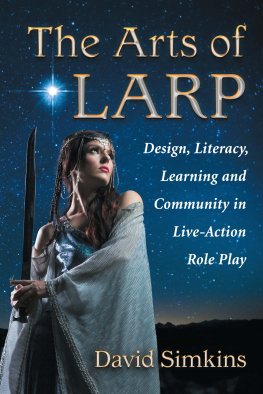


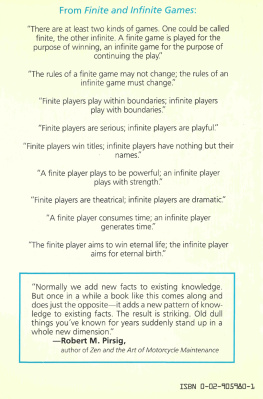
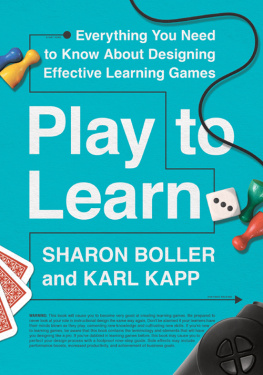
![Chris Bateman [Chris Bateman] - Beyond Game Design: Nine Steps Toward Creating Better Videogames](/uploads/posts/book/119409/thumbs/chris-bateman-chris-bateman-beyond-game-design.jpg)
